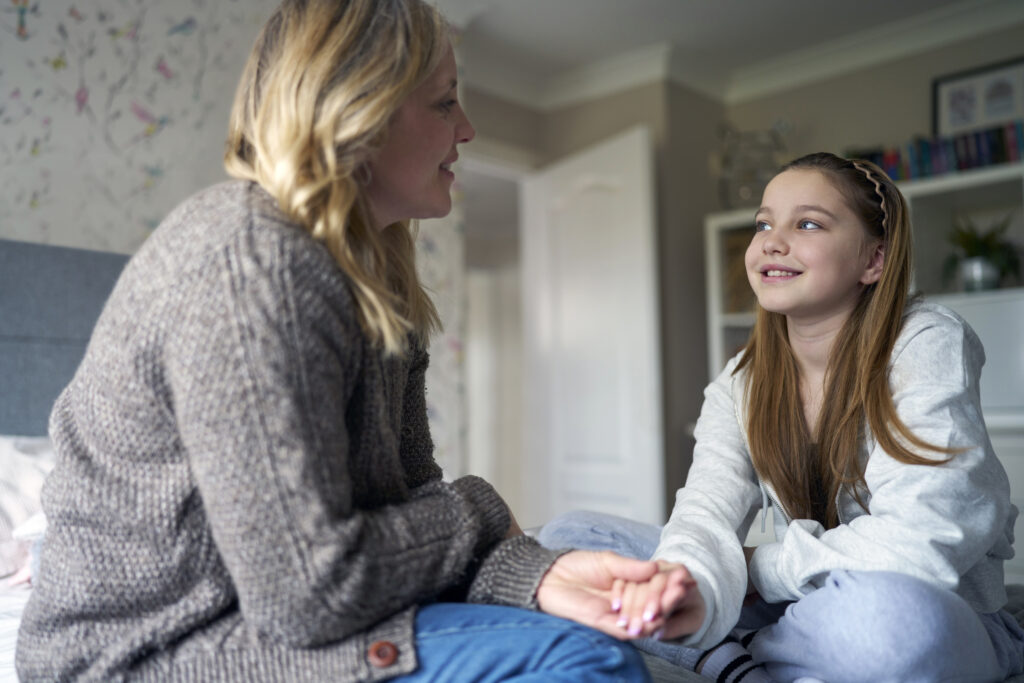Creating Connections, Not Controlling Behaviours
Introduction:
Let’s start with a story. Imagine Sarah, a ten-year-old, who has just moved to a new foster home. She seems withdrawn and often lashes out at the smallest triggers. Sarah isn’t just a “difficult child”; she’s navigating the turbulent waters of change and past trauma. As foster carers, we sometimes feel like we’re swimming against the tide, trying to support children like Sarah while they ride these emotional waves.
Statistics show that over 80,000 children are in foster care in the UK, each with unique backgrounds and behaviours. But what’s behind these “challenging behaviours” we see? And how can we respond in a way that helps children heal and grow?
In this post, we’ll explore the “why” and “what’s” behind children’s behaviours and provide you with practical tools to build stronger connections, understand their needs, and support them on their developmental journey. Let’s look under the surface of behaviours and find ways to help Sarah and other children thrive.
The Science Made Simple
Understanding the brain’s inner workings can offer valuable insights into children’s behaviours. When children experience trauma, their brains might get “stuck” in survival mode. This means they may respond with fight, flight, freeze, or fawn behaviours even when the danger has passed.
Imagine trying to solve a maths problem in a storm. Now, apply this analogy to how children might feel. Their brains, still developing, are trying hard to process emotions and make sense of the world around them. Consider young toddlers: they haven’t yet developed the words for their feelings, so what we see as an “overwhelmed nervous system response” is actually an earnest form of communication.
Recognising these responses as signs of distress rather than misbehaviour can change how we approach and support these children.
What This Looks Like in Real Life
Let’s explore a few scenarios:
1. Scenario: Tom, a 12-year-old, suddenly starts yelling during dinner, knocking over his plate when asked about his school day.
Reality: Tom’s shouting is an expression of unprocessed emotional experiences. Perhaps a school memory triggered a stress response. Recognising it as his way of communicating distress helps us channel our response towards understanding rather than punishment.
2. Scenario: Emily, age 7, hoards food in her room, which causes her to worry about “stealing.”
Reality: Emily’s actions reflect unmet needs, driven by a past where food security wasn’t guaranteed. Understanding this, we provide safe access to snacks and maintain open conversations about her feelings towards food.
3. Scenario: Jake, age 15, frequently skips school and isolates himself in his room.
Reality: Jake might be experiencing a protective response. Building trust and creating a safe environment for conversation can encourage him to share hidden feelings and gradually shift his behaviour.
Your Practical Toolkit
Supporting children effectively involves building trust and safety. Here’s how:
1. Create a Safe Space: Designate a corner at home filled with comforting items where children can retreat when feeling overwhelmed. This becomes their “calm centre.”
2. Listen Actively: When a child expresses emotions verbally or through actions, offer your undivided attention. Validate their feelings with phrases like, “I hear you” or “That sounds really tough.”
3. Routine and Predictability: Establish consistent daily routines, but allow flexibility when needed. Knowing what comes next reduces anxiety for children who have faced instability.
4. Co-Regulation Exercise: Practice deep breathing exercises together. Guiding children through these restores calm, enabling you both to deal with stressful moments more effectively.
5. Empathy Through Storytelling: Use stories (books or personal narratives) to discuss emotions and scenarios, helping children relate and grasp emotional vocabulary.
6. Positive Reinforcement: When children communicate or express emotions constructively, celebrate those moments with affirmations or small rewards.
7. Visual Schedule: Visual charts showing daily activities can help younger children understand their routine, minimising distress linked to the unknown.
Common Challenges and Solutions
Challenge 1: Noticing No Change
Solution: Remain patient; behavioural progress can be gradual. Focus on small wins like moments of calm after stressful events.
Challenge 2: Igniting Further Outbursts
Solution: Maintain a level tone. If the situation escalates, pause and step back, allowing both child and carer to regain composure.
Challenge 3: Difficulty in Creating a Routine
Solution: Introduce routines slowly, including the child in planning, making them feel part of the process.
Challenge 4: Handling a Resistant Child
Solution: Identify interests. Using their hobbies can be an engaging way to establish trust and communication.
A Day in the Life: Living Through the Strategies
Wake up time with Tom: We start with a morning hug, affirming a positive day. Tom chooses breakfast from visual options, lays out clothes, and engages in our morning breathing exercise. Later, we practice empathy learning using bedtime storytelling, discussing the characters’ emotions.
Different Children, Different Needs
Each child is unique. Strategies that suit an EU teenager mightn’t fit a young, sensory-sensitive child. Tailor approaches using past histories as a guide, and adapt flexibility to TN children’s responses and comfort levels.
Working with Your Support Network
Involve social workers and educators. Keep communication open. When appropriate, share effective strategies or routines you use at home, offering continuity and stability across different settings.
Measuring Progress
Observe positive changes—more eye contact, calmer expressions, or increased willingness to share. Celebrating these signs encourages progression.
When to Worry vs. When to Wait
Connect with professional support if significant distress persists or behaviours shift dramatically without identifiable triggers. Trauma-informed professionals offer guidance to unearth underlying concerns.
Building on Success
Focus on small victories, using them as springboards for continued growth. Celebrate achievements, no matter the size, to reinforce positive behaviours.
Monthly Focus: Understanding Triggers
Concentrate on identifying and mapping out possible triggers. Keep a journal, noting patterns or precursors to reactions, adding valuable insights to behaviour understanding.
FAQ Section
Why does past trauma affect current behaviour so profoundly?
The brain’s development hinges significantly on early experiences. Trauma often keeps children in ‘survival mode’, influencing their ability to regulate emotions.
How do I stay positive when changes seem minimal?
Recognise and celebrate minuscule improvements. These are stepping stones towards larger change.
Do I involve the child in creating routines?
Yes, participation can feel empowering and increases the likelihood of routine acceptance.
What if communication fails initially?
Let them understand you’re consistently available for support. Over time, most young people respond positively to patience and understanding.
Through commitment, compassion, and understanding, you’re not just a carer but a crucial support in each child’s journey. You’re helping shape resilient adults ready to face the world one day at a time. Together, let’s continue to ensure that children like Sarah feel seen, heard, and supported.


